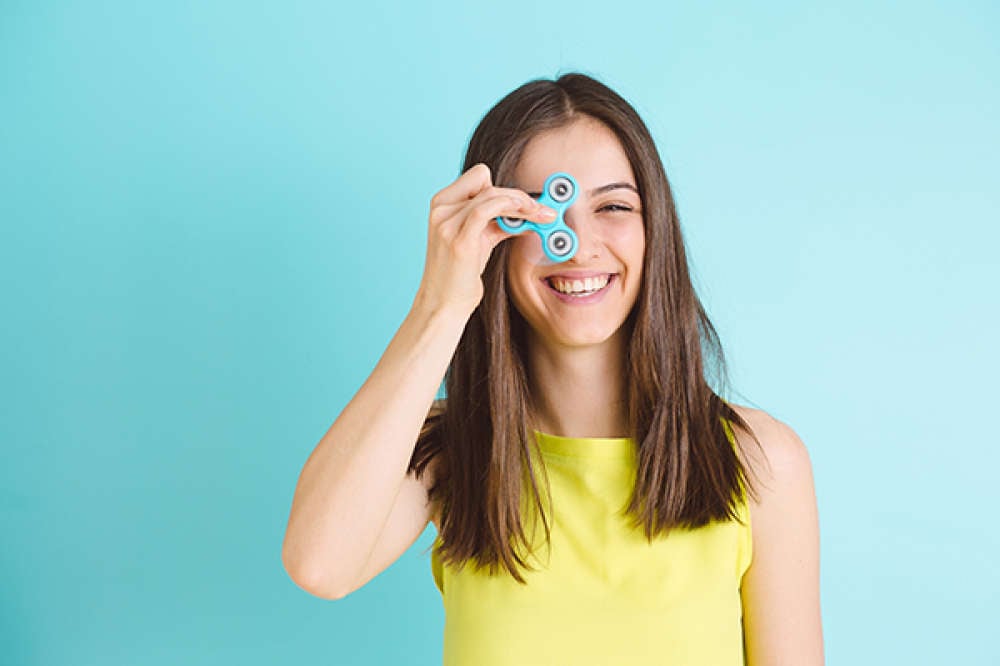Fidget spinners are a type of best-selling toy that gained immense popularity in 2017. They have been marketed for those who fidget and have trouble focusing, specifically children with attention-deficit/hyperactivity disorder (ADHD), autism, and anxiety. The spinners act as a release mechanism for nervous energy.
Shortly after fidget spinners became popular, many schools began banning them because they were larger distractions in classrooms than they were beneficial for most students. Debate surrounds fidget spinners and other such toys about their effectiveness in aiding concentration or releasing anxious energy, and there is little data to demonstrate one viewpoint or the other. Here, we aim to look closer into some established studies and reviews in the child psychology literature to determine if fidget toys are truly beneficial or simply snake oil.
What Is Fidgeting?
Fidgeting is defined as making small movements in a restless, nervous, or impatient manner. Common forms are bouncing a leg up and down while thinking or twirling a pen around a finger. It is considered a bad habit in schoolchildren because it can distract others or indicate a lack of attention.
In 1975 Dr. Sydney Zentall published the optimal stimulation theory about hyperactivity and fidgeting1. He proposes that every individual has an optimal level of stimulation in which they concentrate best: Noisy environments may help some of us, while others require silence.
But when children are in an environment without enough stimulation, they may seek out sensory stimulation, either by tapping a pen against a table or fidgeting with an object between their hands. By such fidgeting, which increases sensorimotor stimulation, a child with ADHD may reach optimal stimulation and concentrate much better.
A recent review of literature determined that allowing a child with ADHD to fidget was more effective than psychostimulant drugs, especially if the child has any other co-occurring disability2.
While the research literature suggests that fidget toys may be well-suited for individuals with ADHD or other learning disabilities, the role of fidgeting in depression and anxiety is not as well understood. Evidence does indicate optimal levels of sensorimotor activation that improves mood, especially in individuals with major depressive disorder (MDD)3. But it is not well understood if sensorimotor stimulation from a fidget toy is enough to improve mood.
To Fidget or Not to Fidget?
A fidget toy may be a worthwhile solution for students who have difficulty concentrating in class or for adults who tend to fidget at their desk. However, if you are considering a fidget toy for your child, it may be advisable to work with classroom teachers. While the concept of a fidget spinner appears theoretically sound, it is a toy that spins around and can offset another student’s concentration by being too stimulating. Maybe it’s best stick with a toy that can be fidgeted under the desk.
Sources
1. Zentall, S.S. (1975). Optimal stimulation as theoretical basis of hyperactivity. American Journal of Orthopsychiatry, 45(4), 549-563.
2. Zentall, S.S., Tom-Wright, K., Lee, J. (2013). Psychostimulant and sensory stimulation interventions that target the reading and math deficits of students with ADHD. Journal of Attention Disorders, 17(4), 308-329.
3. Canbeyli, R. (2013). Sensorimotor modulation of mood and depression: in search of an optimal mode of stimulation. Frontiers in Human Neuroscience, 7, 428
Arick Wang is a doctoral student at Emory University, studying neuroscience and animal behavior. He received his Bachelor of Science in Neuroscience and Behavioral Biology from Emory University in 2012 and his master’s in psychology from Emory in 2015. Working with Dr. Jocelyne Bachevalier, Arick studies the development of early social behavior in infant rhesus macaques (macaca mulatta), specifically trying to link brain development to the acquisition of early social skills with relation to Autism Spectrum Disorder. His research is conducted at the Yerkes National Primate Research Center in collaboration with the Marcus Autism Center.



